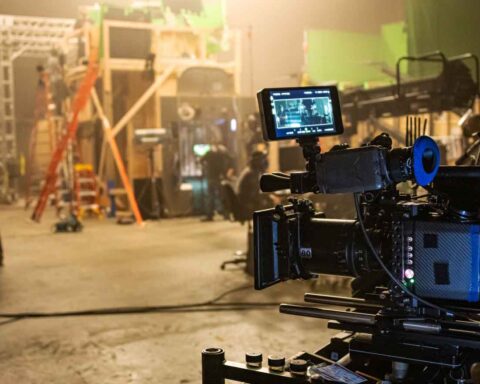The transition from paper to digital is coming whether we like it or not, and we need to set a standard by which the digital products we use in accounting fit into. We need a format or a mold that we have trained our crew to work within.
When we eventually transition to whatever digital systems production accounting chooses to work with, it has to have the look and feel of the existing systems (physical accounting) that have been built in film production over the past 30-50 years.
If we’re asking crew to digitally fill out check requests, petty cash envelopes, purchase orders and payroll documents online or in the cloud, those digital products have to look the same as they have for the past half century or at least for the past 20 or 30 years.
If any new digital products have no similarities to the format we use on paper, then accounting will be stuck training the crew in new systems, new procedures, and new forms. That means we’ll be spending ALL OF OUR TIME teaching crew to use digital products that would have been easy for them to use if the software had been made to look and feel the same as the systems they’ve gotten used to.
If digital accounting products are easy for crew to use, then we, in the accounting office will be able to focus on doing our job. Our job is processing the paper and tracking cost on a picture so we can deliver a cost report and random estimates to the producers, the UPM, the line producer or the studio.
But if crew finds the products hard to use, confusing or counter intuitive then all the people whose tracking cost on a picture will essentially be pulling their hair out because we will be stuck answering inane questions from crew who are having a hard time with the product.
I actually had a project where we were using a digital system, including web-based check requests, purchase orders, and digital portraits orders; and the transportation coordinator said to me, “I don’t use the Internet”. What he was basically saying was that he wasn’t interested in using the online PO system because he doesn’t want something that’s different than the piece of paper that was put in front of him.
Avoiding situations like this is one of the reasons we need to make the transition from paper to digital in a way that has a look and feel of what we’ve done for the past half century.
I can think of two big studios that make tons of content (feature, television and branded) who have said that their corporate executives are telling them that they have to make the transition to digital in the production accounting office. They can’t continue to deliver paper and all of them are getting pressure from a VP, SRVP or EVP. But so far, they’ve avoided it.
The reason they’re avoiding it is because the people who are making the demand are obviously the corporate guys who have to pay the bills for storing miles and miles, and hundreds of tons of paper each year much less over decades. Although they’re getting pressure to transition to digital, the guys who are making these transition requests are used to working with software like Conquer and Assurance (or whatever), which are great systems for corporate America, but don’t fit production.
If we don’t find a way to convince the fortune 500 guys and the IT guys that they have to build systems that live and breathe like our crews do, then we are going to keep pulling our hair out and we’re not going to be able to do our jobs, which is processing the paper and estimating cost for the people who need answers.
We can’t do what G.E does. We can’t even do what Apple does. So, we need to find systems that are designed specifically for film production. If we can’t find them, then we have to build them.
We have to find a method that is set and comes from film production because whatever the payroll services come up with won’t help us. I have never seen anything the payroll services have created that actually helps us. I admit there’s one payroll service I’ve used in the past that’s pretty innovative, but they’re all stuck building antiquated accounting systems when there are excellent options like Sage, Oracle, SAP, Xero, Wave, QuickBooks.
There’s also a broad range of open source software and accounting systems that do the job of physical accounting, but the payroll services are so stuck in their closed architecture and having to build their own systems that they can’t stay ahead of the curve on stuff that actually matters, which are the systems and the processes that make our jobs easier and faster.
We pull our hair out every day trying to make the production payroll services software work using spit and glue, but it shouldn’t have to be that way. Their software helps them cut costs. It helps them keep production companies chained to their process and their entire system, and once we get stuck in a system, that’s it. It’s not open source, it’s not open architecture. Essentially, their software is designed to keep us chained to their antiquated systems that are like a giant anvil or boat anchor attached to our ankle, dragging us to the bottom of the Pacific Ocean.
In order for physical production and production accounting to make the transition into a digital space, we have to have systems that are open architecture and allow the systems to communicate through an application programming interface (API) that are just like the current processes we’re executing only in a digital form. It’s got to happen that way. If it doesn’t happen that way, we will spend our time training crew and frustrating crew to no end on a system that doesn’t really work for production accounting or crew. Crew are resourceful and will work around a shitty system if it does not make their life simpler.
All the systems that we currently use are paper based and require us in accounting to do all the data entry. However, we should be tapping into crew and vendors for some of the data entry into a digital system where they enter the name, the street, the address, the city, state, zip, the amount, and other information from a W-9.
That’s not to say the entries made by crew should be final. Instead, they should enter the data so we can proof and approve the work. In the end our role will be proofing and correcting entries so that the people on the front end are doing all the data entry. That data entry then goes through a process where it gets approved and uploaded into whatever accounting system we’re using.
The fact that we have to go through a piece of paper five, six, seven or even ten times is a big waste of resources. If we transition to digital systems that have the same look and feel as our physical accounting system, then we’ll be touching a piece of paper only once while entering the data. Whoever is responsible for getting that paper in should be able to do the data entry quickly because they know what it’s about, why it exists and why we’re being asked to pay it.
Exchanging data through an API in the 21st century is a must.It is the baseline.It’s not an add on.It’s not something new and great.Rather, it’s a method we should have adopted five or ten years ago, but we are stuck with antiquated systems that the payroll services are shoving down our throat on a regular basis.Now’s the time to break free and set the standard for what we expect in a digital system that processes all the paperwork we get on a daily basis.
Take Away
We have to make the change before the producers (studios, networks, OTTs) force a system on us and we CANNOT rely on the payroll services to offer another shitty system that cuts their costs, but makes our lives more difficult.








